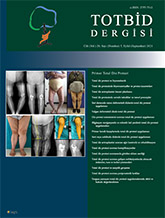
As a result of new developments in the field of medicine, the average life expectancy is increasing. One of the most common diseases with increasing life expectancy is osteoarthritis. Advanced knee osteoarthritis affects quality of life negatively and total joint replacement is mostly preferred as a treatment in patients who do not respond to medical treatment. There are more than 150 knee prosthesis designs in the world market. Each design has been developed as a result of various researches for patients to lead a better life. Although there is so much research and variety on it, some of the patients are still not satisfied after the surgery. The unique biomechanics of the knee joint should be well learned by the surgeons in order for the patients to get better results and for the implants to last longer. In this article, we evaluated this unique biomechanics of the knee joint and how this biomechanics has changed with knee prosthesis designs.